In today’s dynamic business environment, efficiently managing the entire revenue lifecycle from product creation to cash collection is crucial.
Salesforce’s Revenue Lifecycle Management (RLM) provides a comprehensive, integrated platform designed to streamline these processes.
This blog post will introduce the key concepts and components of RLM, explaining how it can benefit your organization.
Product Catalog Management
Revenue Lifecycle Management starts with a robust product catalog management system. This component allows businesses to centralize their product and pricing management, ensuring consistency and accuracy across all sales channels.
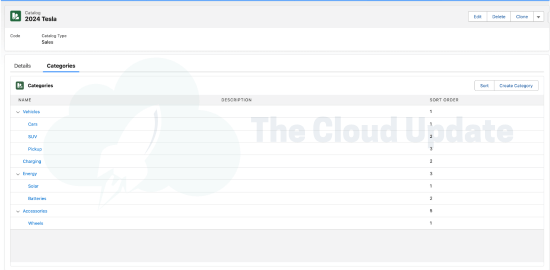
Features:
- Centralized Product and Pricing Model: Manage all products and pricing methods directly on the Salesforce platform.
- API Integration: Seamlessly integrate with external platforms using a variety of APIs.
- Flexible Product Structure: Define and manage product attributes, bundles, and classifications.
Benefits:
By managing products and pricing on the Salesforce platform, businesses can ensure all stakeholders have access to the latest information, reducing errors and enhancing customer experience.
To learn more, visit our other Product Catalog Management posts :
Official Salesforce Documentation: Product Catalog Management documentation.
Salesforce Pricing
Accurate pricing is critical to successful sales operations. Salesforce Pricing within RLM offers a customizable and reliable pricing solution for your entire product portfolio.
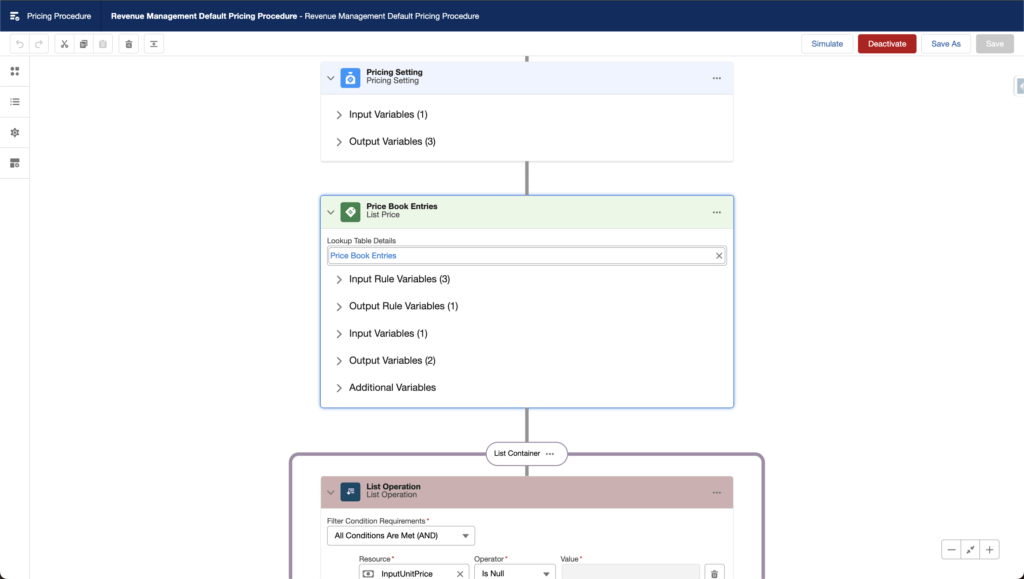
Features:
- Customizable Pricing Procedures: Define how pricing is calculated and adjusted through price waterfalls.
- Price Adjustment Methods: Support for volume-based pricing, attribute-based adjustments, bundle-based adjustments, and contract pricing.
- Centralized Pricing Management: Use APIs to apply consistent pricing across all platforms.
Benefits:
Streamlined and accurate pricing processes ensure that quotes and orders are always up-to-date, reducing manual errors and improving customer satisfaction.
For more details, visit the Salesforce Pricing documentation.
Product Configurator
The product configurator is an essential tool for businesses that offer customizable products. This component of RLM allows users to configure products to meet specific customer needs.
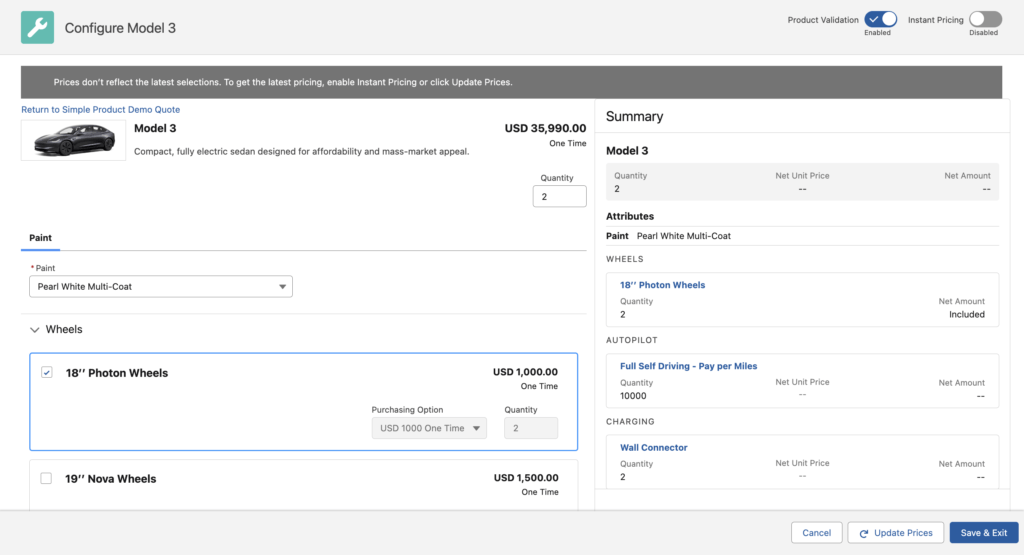
Features:
- Customizable Screen Flow: Build and customize screen flows to guide users through product configuration.
- Configuration Rules: Define rules to ensure valid product configurations and automatic selections.
- Integration with Pricing: Automatically adjust pricing based on selected product configurations.
Benefits:
A user-friendly product configurator enhances the customer experience by making it easy to customize products and see pricing updates in real-time.
For more details, visit the Product Configurator documentation.
Quote and Order Capture
Efficiently managing quotes and orders is vital for any business. RLM provides advanced tools for capturing and processing quotes and orders.
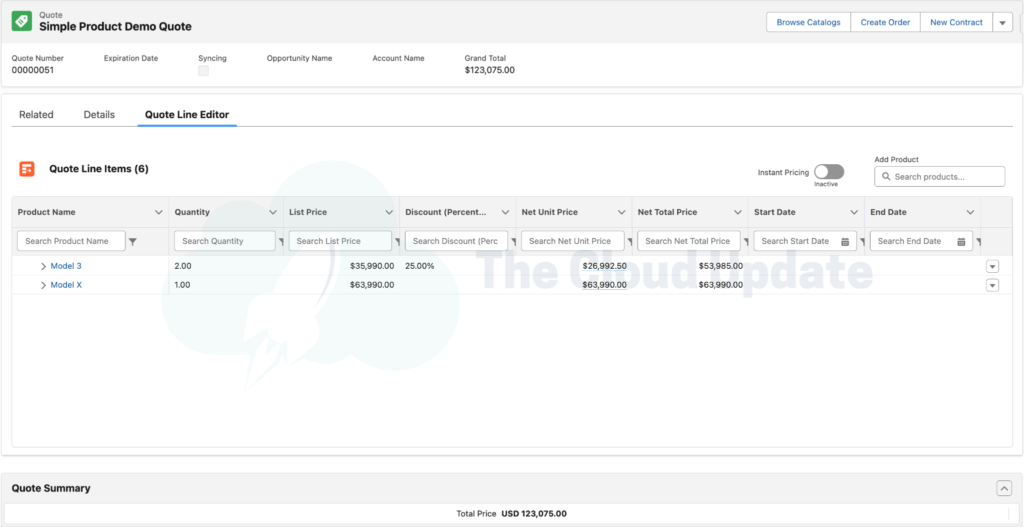
Features:
- New Transaction Line Editor: Create and edit quotes and orders with ease.
- Automated Asset Creation: Generate assets from quotes and orders automatically.
- API Integration: Create quotes and orders through APIs for seamless integration with external systems.
Benefits:
By streamlining the quote and order capture process, businesses can reduce the time and effort required to generate accurate quotes and orders, leading to faster sales cycles and improved customer satisfaction.
For more details, visit the Quote and Order Capture documentation.
Asset Lifecycle
Managing the lifecycle of assets and subscriptions is a critical part of revenue management. RLM provides comprehensive tools for tracking and managing assets from creation to renewal or cancellation.
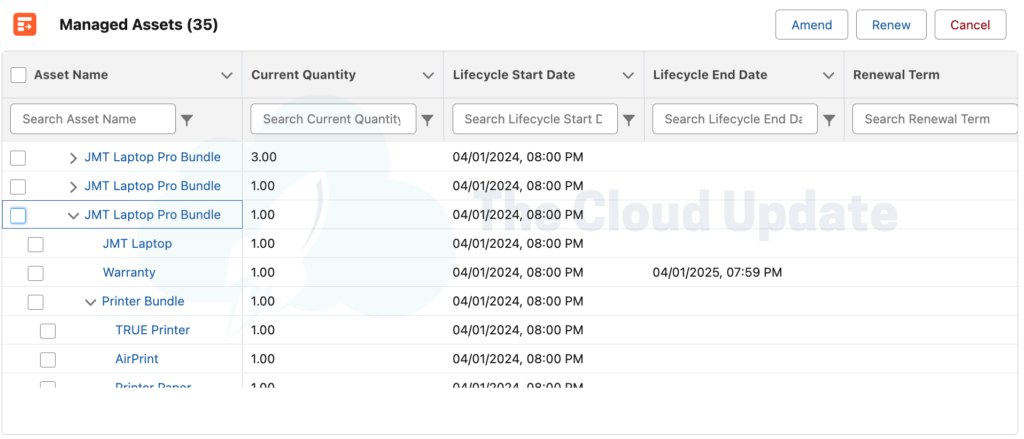
Features:
- Automated Asset Management: Create and manage assets automatically based on order activation.
- Subscription Tracking: Track the lifecycle of subscriptions, including amendments, renewals, and cancellations.
- Historical Insights: Gain insights into the history and status of assets and subscriptions.
Benefits:
Effective asset and subscription management helps businesses maintain accurate records, ensuring timely renewals and reducing churn.
To learn more, view our other posts on Asset Lifecycle Management:
Asset Creation and Amendment Tutorial
Official Salesforce documentation Asset Lifecycle documentation.
Conclusion
Revenue Lifecycle Management is a powerful framework designed to streamline and optimize the entire revenue lifecycle on the Salesforce platform. By integrating product catalog management, Salesforce pricing, product configurator, quote and order capture, and asset lifecycle management, RLM provides businesses with the tools they need to manage their revenue processes efficiently and effectively.
Key Benefits of Implementing RLM
- Unified Platform: All revenue-related processes are managed within Salesforce, providing a single source of truth and enhancing data consistency.
- API-First Approach: Easier integration with existing systems and e-commerce platforms, ensuring seamless operations across different business tools.
- Automation and Intelligence: Leveraging Salesforce’s automation and AI capabilities to optimize revenue processes, reduce manual effort, and improve accuracy.
- Scalability: The composable nature of RLM allows businesses to scale their revenue management processes as they grow, ensuring long-term sustainability and efficiency.
Future Developments in RLM
Salesforce continues to innovate within the RLM framework. Upcoming features include:
- Dynamic Revenue Orchestration: Expected in Summer ’24, this feature will provide advanced capabilities for managing revenue processes dynamically.
- New Billing Solution: A comprehensive billing solution is in the works, aiming to streamline the invoicing process.
As Salesforce continues to innovate, the future of RLM looks promising, offering even more advanced capabilities to support your business growth.
Stay tuned for more updates and in-depth guides on how to make the most of Salesforce Revenue Lifecycle Management.
